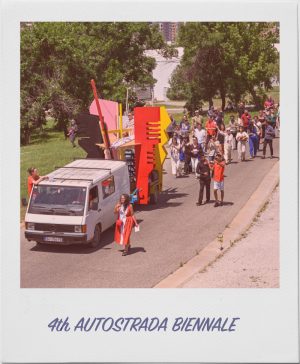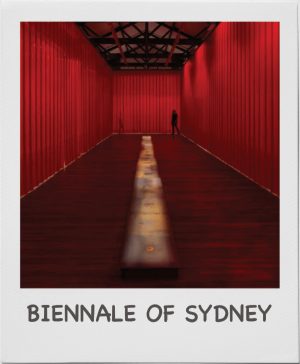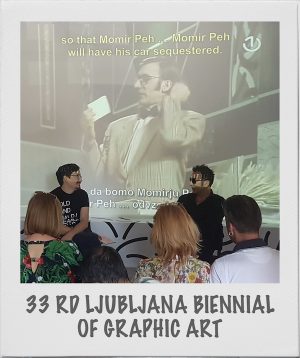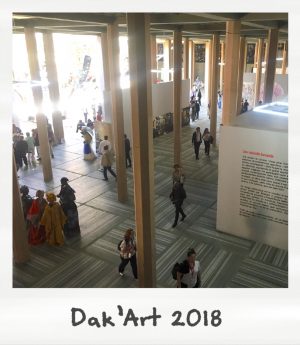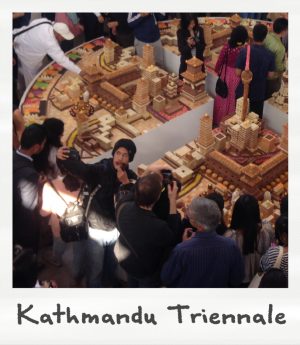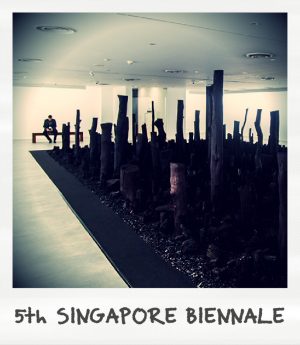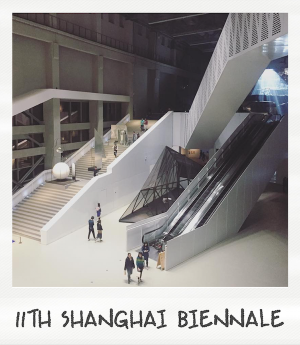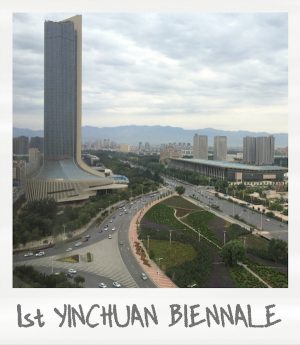From a historical point of view, it was wonderful to see so much joy, in a place that has seen so much suffering, still torn by great ethnic conflicts between Albanians and Serbs. The former supported by NATO, the latter by Russia. But is Autostrada Biennale a Marxist Utopia? – asks Sinziana Ravini
Read More
NIRIN: the 22nd Biennale of Sydney
Our correspondent Michaela Bear had a chance to visit the 22nd Biennale of Sydney days before it closed to the public on Tuesday, 24 March 2020. Her reports describes an exhibition giving voice to under-represented communities, issues and histories…
Read More
The biennial franchise has arrived – in Al-Ula and on Instagram
by Melissa Gronlund
When Desert X – a young biennial from California – announced it would be producing an exhibition in the Saudi desert site of Al-Ula, it ignited a firestorm of international opposition. Three board members resigned, including Ed Ruscha, in order to protest the collaboration with the Saudi state. Discussions about boycotts dominated coverage…
Read More
Tell a joke and shame the devil: 33rd Ljubljana Biennial of Graphic Art
by Vladimir Vidmar
Plagued by problems direr and darker than ever before in history, and more disillusioned than ever, we turn to our everyday to find fragments of inspiration that could potentially ignite the spark of change. Such is this case with the 33rd Biennial of Ljubljana, entitled Crack up, Crack down, where its curators, the artist collective Slavs and Tatars pose a question: In the era of post-truth, can a joke set us free?
Read More
Getting INto Dak’Art 2018
by Kara Blackmore
The 13th edition of the Dak’Art Biennial explores the contingencies of exhibition-as-novel, the curatorial approach taken by its Artistic Director Simon Njami. Known as one of the luminaries of the contemporary African arts and the founder of Revue Noir, Njami often positions himself as a writer, aspiring to emphasize a narrative thread and literary rhythm of the exhibitions he undertakes…
Read More
Making Place: a report on the first Kathmandu Triennale
by Zeenat Nagree
Outsiders occupy a unique position to look in, to observe or to critique. Patterns and characteristics that are unrecognisable or even irrelevant to insiders come to the fore; insights gained and buried layers exposed. Such encounters are commonplace in the art world, unremarkable almost. Yet, the depth and complexity brought by these encounters deserves particular attention when they involve artistic transactions, sites of visibility, and history writing – occurring in the context of large exhibitions, such as biennials or triennials.
Read More
Ebbs and Flows at Sharjah Biennial 13 – Tamawuj
by Elizabeth Derderian
The question of infrastructure looms large in the UAE, as a biennial organization becomes an art foundation, as major museums are under construction, and as Dubai’s commercial galleries continue to proliferate.
Read More
The fifth edition of the Singapore Biennale: It could be worse
by John L Tran
The nine conceptual zones, which include explorations of cultural identity, post-colonialism, agency and psychogeography, are a love letter to critical thinking. With titles like A Presence of Pasts and A Somewhere of Elsewheres it has to be said that the letter is written in purple prose, and a little overdetermined, but still – not bad for an art festival in a country that has draconian gum laws.
Read More
Timely Provocations: The 3rd Kochi-Muziris Biennale
by Robert E. D’Souza and Sunil Manghani
Far from the recognised centres of contemporary art of Mumbai and Delhi, the Kochi-Muziris Biennale has generated a great deal of interest among the art fraternity. Now into its third edition, the Biennale’s ‘creation myth’ still pervades with nostalgia for how – ‘against all odds’ – it came to fruition.
Read More
Biennialgram from Suzhou Documents
by Shwetal A. Patel
The co-curators of the inaugural exhibition ‘Histories of a Global Hub,’ Zhang Qing (Founding Director of the Shanghai Biennial and Curatorial Head of the National Palace Museum in Beijing) and Roger M. Buergel (Artistic Director of documenta 12 (2007) and Director of the Johann Jacobs Museum in Zurich), set out to eschew what they saw as the ‘largely exhausted’ biennale format. Describing the latter as a ‘bouquet of arbitrary themes’ with an emphasis on spectacle, they argue for the value of depth and sensitivity in bringing together the ancient and modern in a sustainable, yet rigorous manner.
Read More
Biennialgram from the 11th Shanghai Biennale
by Rose Lejeune
Curated by artist’s collective Raqs Media Collective, the 11th Shanghai Biennale takes its starting point as the question “Why Not Ask Again? Arguments, Counter-arguments, and Stories”. A multifarious and speculative question that seeks to utilise the Biennale as a site that can offer the ‘arguments and counter arguments of our time.’ Offering an often pessimistic view of the present spliced with glimmers of hope for the future, especially through technology, the Biennale explores how questions ‘happen’ in our world and posits that art-works carry within them possible futures in as much as they are always drafts for the, as yet, untold future in the present.
Read More
Biennialgram from the 1st Yinchuan Biennale “For an Image, Faster than Light”
by Shwetal A. Patel
The accelerated programme of development is not new to China, but the unusual regional and cultural context has triggered speculation as to its underlying motives. If applied to the Biennale, this delivers a perhaps more enlightening critique than the mass media’s overwhelmingly singular focus on the last-minute removal of Ai WeiWei from the Biennial’s program…
Read More


